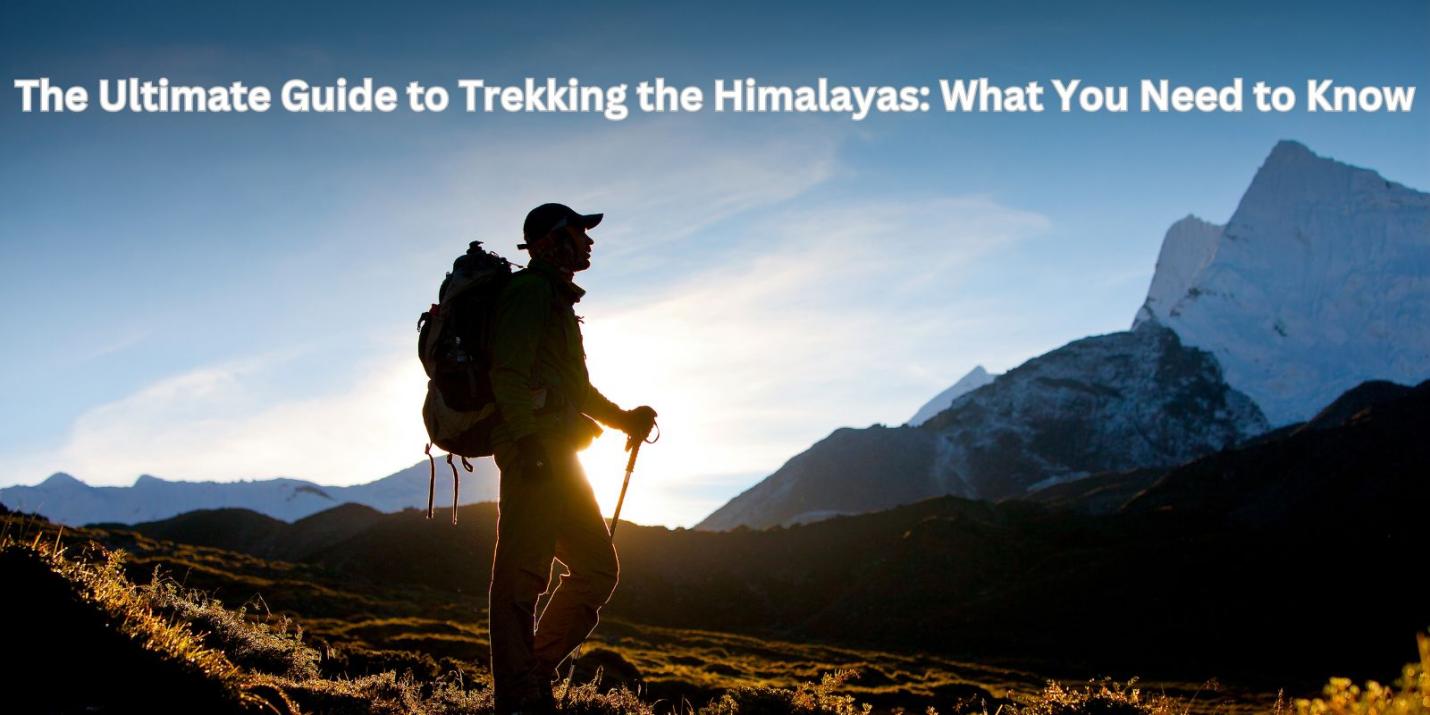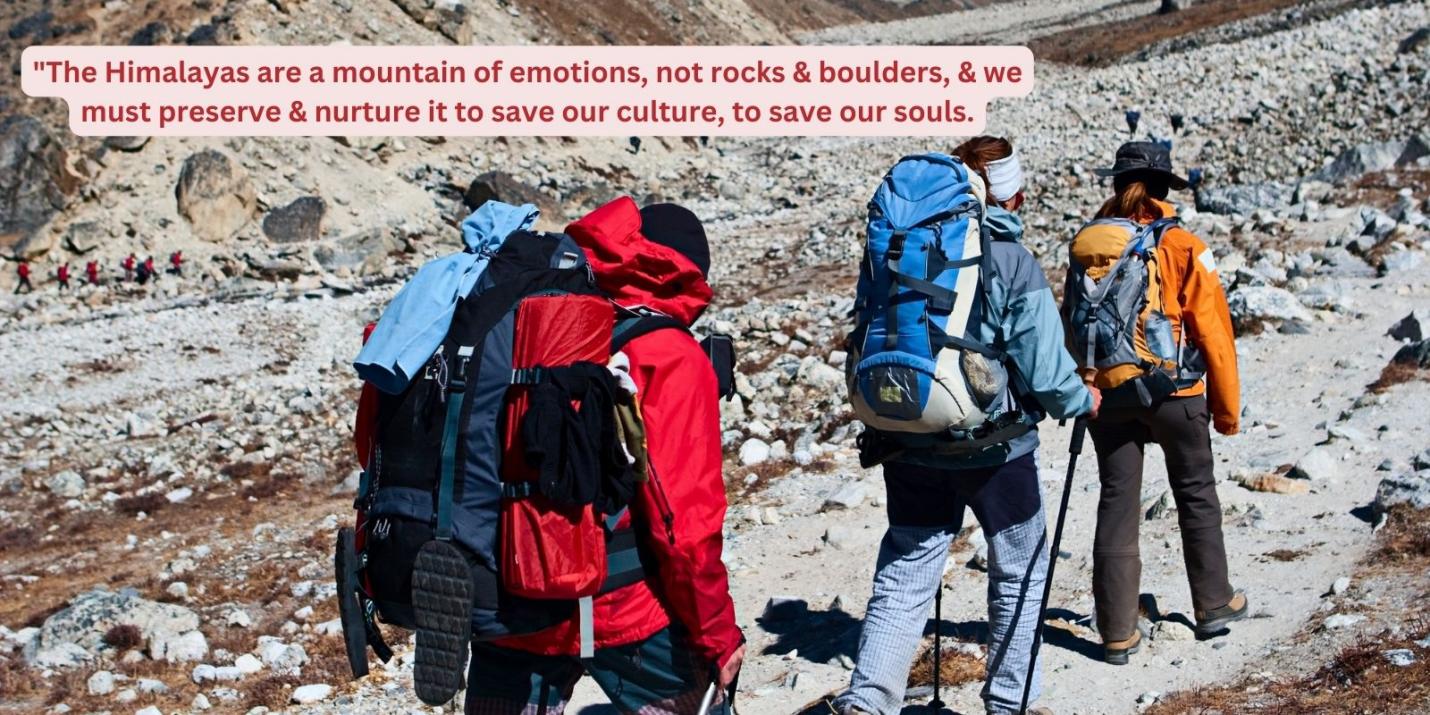The Ultimate Guide to Trekking the Himalayas: What You Need to Know
Have you ever wished you could stand above snow-capped mountains, breathe clean mountain air, and behold a nearly unreal view? Imagine going on an experience that pushes you to the edge while absorbing you in peaceful natural beauty. All of this and more may be found when trekking in the Himalayas. It is the highest mountain system, extending challenging treks for adventure lovers and hard-core trekkers. Are you prepared to go on one of life's most breathtaking adventures? Let's discuss all the information you require to do it!

Why the Himalayas Are a Trekker's Dream
The Himalayas slowly spread across five countries and are the most beautiful and diverse ground of the five continents. Although it does not represent such a large territory, it has many faces, from snowy peak valleys to isolated villages. The size of the mountains is majestic, and the paths test your endurance.
The Spiritual and Adventurous Allure of Himalayan Trekking
Himalayan trekking is not only a trek but a spiritual walk. Trails also go through Buddhist monasteries and holy grounds, where you can find solitude in the rocky landscape.
Top Trekking Destinations in the Himalayas
Everest Base Camp, Nepal: A Legendary Journey
The Everest Base Camp trek is one of the most beautiful treks tourists can take worldwide. It is also among the most popular treks, enabling you to take a closer view of Mount Everest and other mountain ranges. Throughout the trek, you can pass through Sherpa villages, many suspension bridges, and Namche Bazaar, a market village.
Annapurna Circuit, Nepal: A Trekker's Paradise
The landscape of the Annapurna Circuit is very colourful, with places varying from subtropical to temperate to desert-like areas. Thorong La Pass is the trek's high point, and it offers the chance to learn about the Gurung and Thakali people's cultures.
Markha Valley, India: The "Tea House Trek" of Ladakh
One of India's high-altitude treks, the Markha Valley trek, offers landscapes that provide an insight into the traditional Tibetan way of life. You will come across Buddhist monasteries, high-altitude village areas, and the beautiful sights of Kang Yatse and Stok Kangri.
Snowman Trek, Bhutan: The Ultimate Challenge
As one of the most challenging treks, the Snowman Trek in Bhutan involves traversing stunning valleys, breathtaking mountain passes, and untouched landscapes. It is highly recommended for those who are up for the challenge of a very special kind of trekking adventure.
Planning Your Himalayan Trek
Choosing the Right Season
The area determines the ideal time of year to walk the Himalayas:
Spring (March-May): This season is best to give you friendly weather, blossoming trees, and clear skies.
Autumn (September–November): renowned for its breathtaking scenery and consistent weather.
Winter (December–February): This time of year is ideal for adventures at lower elevations where the terrain is covered with snow.
Monsoon (June–August): This is the best time of year to trek in places with little rainfall, like Ladakh.

Assessing Your Fitness and Skill Level
We cannot suddenly win the Himalayas out of our daily routine. Himalayas trekking involves physical prep. Begin practising cardio, strength and endurance exercises many weeks before the planned date. This is important to remember when picking a trek, while many, like the Everest Base Camp, are more challenging than others.
Hiring Guides and Porters: When and Why
For the experience to be more improved and safer, one should hire local guides. They also give essential background information about the area's traditions and will guide you on rugged terrains.
Packing Essentials for a Himalayan Trek
Clothing: Layers, Waterproofs, and Thermal Gear
This is important because the Himalayas will experience different layers of climate change. For the upper part of the body, bring thermal wear, a waterproof coat, and breathable trekking pants or trousers.
Footwear: The Importance of Sturdy Boots
Safety first! Always wear good-quality trekking shoes with good ankle support. Wear them before the trek to prevent blisters, sore feet, and aching feet throughout the trek.
Equipment: Backpacks, Trekking Poles, and Sleeping Bags
Some items, such as a well-fitted backpack, lightweight trekking poles, or a four-season sleeping bag, are desired. Many trekkers also have a hydration system, such as a water bottle and a first aid kit at the time of the trek.
Understanding Altitude and Acclimatization
The Effects of High Altitude on the Body
While tracking upward, oxygen becomes scarce, which causes symptoms of altitude sickness. Some of the signs are headache, nausea, and fatigue.
Tips for Preventing Altitude Sickness
Take time to adapt, drink plenty of water, and avoid alcohol. You can also arrange to rest on special days to allow your body to adapt to the new altitude.
Recognizing and Managing Symptoms
If you begin to feel the symptoms worsening, such as difficulty breathing, go down fast and get medical help.
Snowman Trek, Bhutan: The Ultimate Challenge
Dubbed one of the most challenging treks in the world, the Snowman Trek in Bhutan takes you through remote valleys, high mountain passes, and pristine wilderness. This trek is ideal for experienced adventurers looking for a once-in-a-lifetime challenge.

Capturing Your Himalayan Adventure
Documenting the Journey
Trekking in the Himalayas is a lifetime experience; if it is photographed, the memories are precious. Bring a small camera or a smartphone to take beautiful terrain shots.
Sharing Stories
Use blogs, social media, or personal diaries to share experiences. Focusing on what has been learned, who has been met, and what kinds of difficulties have been surmounted is crucial. Your stories can help others decide to set out on their Himalayan adventure.
Pack Your Bags!
The mountains of the Himalayas are inviting, and their trails are waiting to be filled with your footprints. So, prepare yourself, build up your luggage, muscles, and mind's eye, and welcome the kings of the earth: the mountains. Your Himalayan experience is not simply a hike but the exploration of the world and oneself simultaneously.